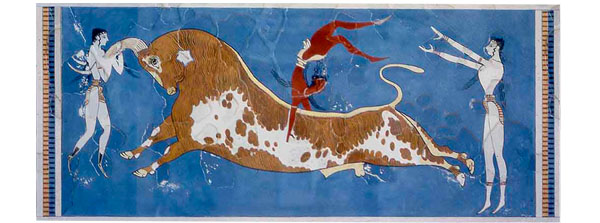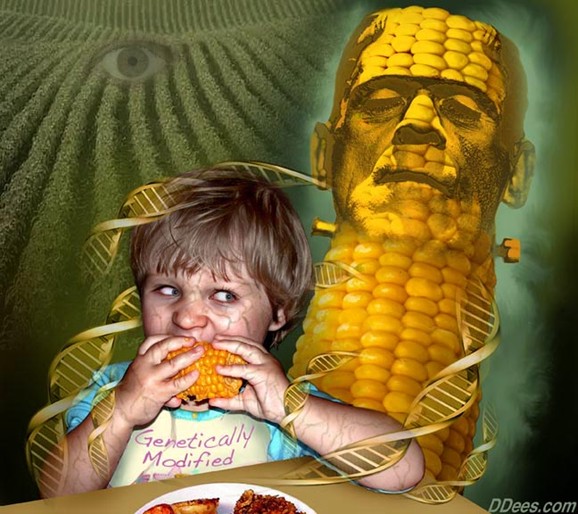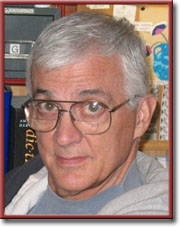God’s Competition: Genetic Engineering

Skip the B.S.
By Skip Eisiminger

“The future of genetic engineering promises cartilage which can be injected into aching joints, the return of the wooly mammoth (but not T. Rex), Christmas trees that ‘naturally’ glow in the dark, and bacon containing Omega-3 fatty acids instead of saturated fat. Imagine pork grown in Petri dishes to solve the vegetarian’s dilemma: tasty as a pork chop is, why should an animal have to die to provide anyone with a slab of protein?” Skip Eisiminger
“If man does not play God, who will?”—James Watson
“Many who will have their death gene cut out
may want it restored on getting the gout.”—The Wordspinner
 CLEMSON South Carolina—(Weekly Hubris)—10/21/2013—The desire to clone someone surely originated in grief.
CLEMSON South Carolina—(Weekly Hubris)—10/21/2013—The desire to clone someone surely originated in grief.
In the decade following the death of Leonardo da Vinci in 1519, his half-brother, Bartolomeo, decided to create a replica. To lighten his loss, he scoured the village of Vinci for a woman of the appropriate age who bore a resemblance to Leonardo’s mother, married her, and had a son in 1529 named Pierino after the child’s grandfather, Piero.
When the “clone” was just 17, Giorgio Vasari declared that the boy’s artistic efforts “made everyone marvel.” Indeed, some of his work, once attributed to Michelangelo, may be seen in the Louvre today, but before the young sculptor could fully mature,he died of malaria at the age of 23.
We now know that acquired characteristics such as Leonardo’s skill with a paint brush cannot be transmitted from one generation to another, but it’s quite possible that Pierino inherited some tendencies and affinities from his uncle. Moreover, the urging of his parents and tutors surely helped nudge him in the direction of an art career, but there are no genes for the complex behaviors that produced the Mona Lisa or the Last Supper.
As early as 30,000 BC, Africans were attempting to improve the wolf-dog through selective procreation. By 10,000 BC, sheep were being shorn in Southwest Asia and, by 8,000 BC, Asians on the Indian subcontinent were milking cows.
Thus, by AD 1926, there wasn’t an experienced animal breeder on the globe who didn’t know that chimpanzees and humans could not successfully reproduce.
That didn’t stop Stalin and his animal husbandry men from attempting to create mutants that the dictator called “living war machines,” a mule-like hybrid that would have “immense strength but an underdeveloped brain.” Fortunately, no cannon fodder or factory slaves were produced by the program, and its leader was exiled to Kazakhstan where he died. Only the myth of the yeti survived him.
Never one to be outdone by Stalin, Hitler and Himmler established the Lebensborn program in 1935 to breed storm troopers for the thousand-year Reich. Initially, membersof the SS were encouraged to father children with qualified volunteers. But when this program produced a mere 20,000 children in a decade, Himmler knew he had to raise the ante to meet his self-imposed quota. Estimates vary, but perhaps as many as 250,000 blond, blue-eyed, Christian children were kidnapped in occupied countries and raised in the German “fountains of life.” Children who refused to “Heil Hitler” were executed.
With the discovery of DNA’s double-helix structure in 1953 and the mastery of gene splicing in 1983, man’s attempts to improve on nature began in earnest. Today, we have cubic watermelons to save refrigerator space, strawberries growing in colder climates thanks to the addition of cold-water fish genes, potatoes engineered to die if infected with a fungus, and insulin grown from bacteria.
Remarkably, none of these Franken- or pharm-products has created any human health issues (that we know of). In the realm of body-part replacements, we have thousands of pig valves operating in human hearts; artificial tracheas, skull pieces, and jaw bones grown from human stem cells; human ears grown on the backs of mice; and sperm produced from bone marrow. In 2004, radical feminists began cheering the prospect of a world without males when the Japanese created a mouse from two eggs and no sperm—a virgin birth.
The future of genetic engineering promises cartilage which can be injected into aching joints, the return of the wooly mammoth (but not T. Rex), Christmas trees that “naturally” glow in the dark, and bacon containing Omega-3 fatty acids instead of saturated fat. Imagine pork grown in Petri dishes to solve the vegetarian’s dilemma: tasty as a pork chop is, why should an animal have to die to provide anyone with a slab of protein?
Since we know that Down’s syndrome is caused by a single extra chromosome, it may one day be possible to fix that one-in-46 before birth. Since once-paralyzed rats are now walking thanks to nerves grown from their stem cells, a similar procedure for humans is raising hopes in the disabled community.
And, if the 334th letter of one gene (in about 25,000) is a G instead of an A, that tiny difference multiplies by eleven the chances of developing Alzheimer’s. “Typos” like this in the library of three billion base pairs may one day be amended.
But the risks of gene modifications loom large, and many are calling for some over-arching agency to act as “life guards for the gene pool.”
One genetically modified species of corn has already escaped from a “safe” area in Mexico to “infect” a nearby farm. How that new variety will affect the native strains is unknown. Another risk involves the reliance on a monoculture, genetically engineered or otherwise. This risk was tragically demonstrated in Ireland 167 years ago in the great famine that took a million lives and sent millions more into exile. In 2013, Ireland is the only country in Europe whose population is lower than it was in 1850.
One of the best “barometers” of risky behavior is the “interest rate” at the nation’s “cartoon bank.”
Traditionally a conservative group, our banker-cartoonists are wary of each new investment society makes, but especially something as fundamentally different as altering the natural order.
Charles Barsotti foresees a boss telling an employee, “Your clone, Melford, has come of age—you must leave.”
P.C. Vey creates a butcher who tells a customer, “Of course they are low in fat and cholesterol, they’re made of polystyrene.”
William Hamilton imagines an older child telling her younger “sibling,” “I’m their real child, and you’re just a frozen embryo thingy they brought home from some laboratory.”
And Sam Gross taps into Hollywood’s fear that mutants will escape the lab and rule the world. Outside a cage containing two human researchers, a giant rabbit uses an eye dropper to mix some sinister brew as one of the humans says, “Some genetic engineers we turned out to be.”
Given the real “brave new worlds” begun by Stalin and Hitler, we may assume that, some day, someone will try to locate a stem-cell cure even if it means creating a clone whose body he can harvest for its organs. However, we should not allow humans to become mere instruments of another’s purpose without their consent.
![]()
Note: The image illustrating this essay derives from http://www.philosophicalanthropology.net/2012/11/gmo-global-alert.html.